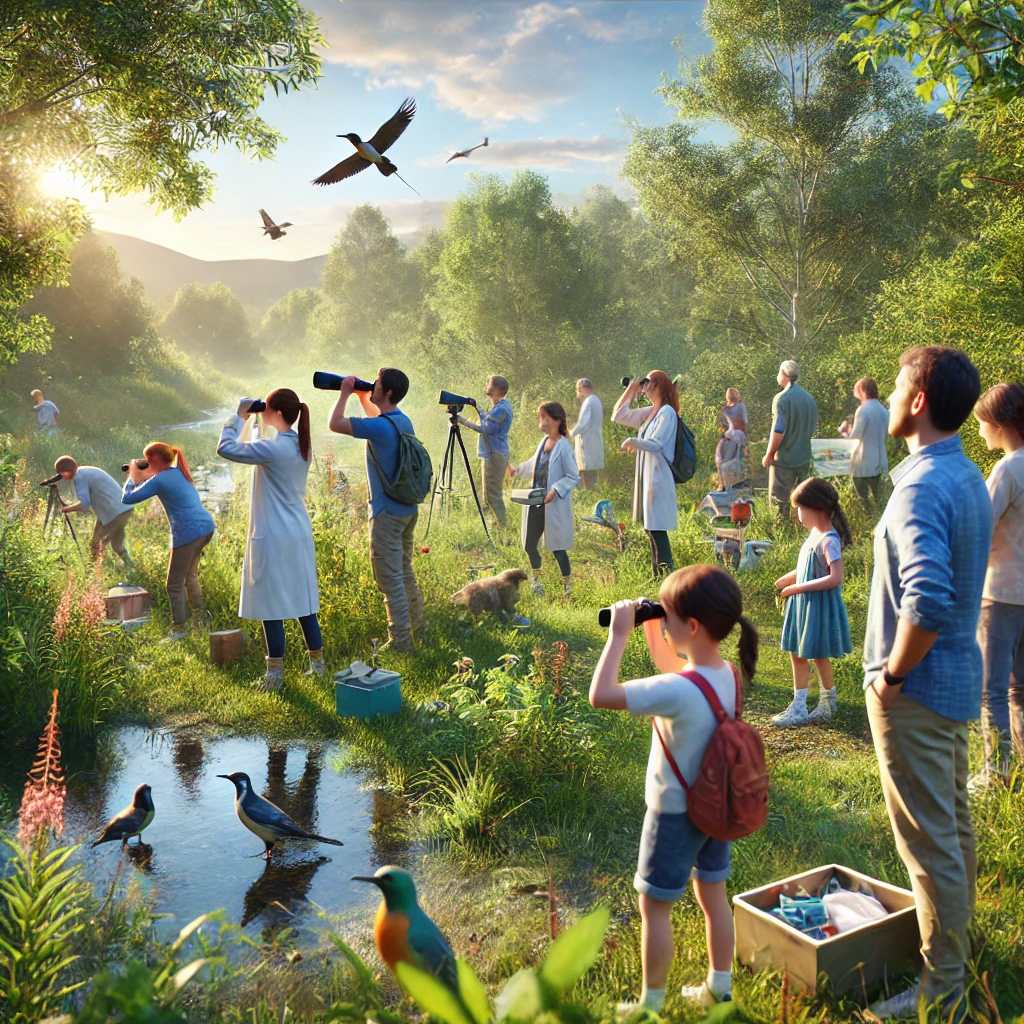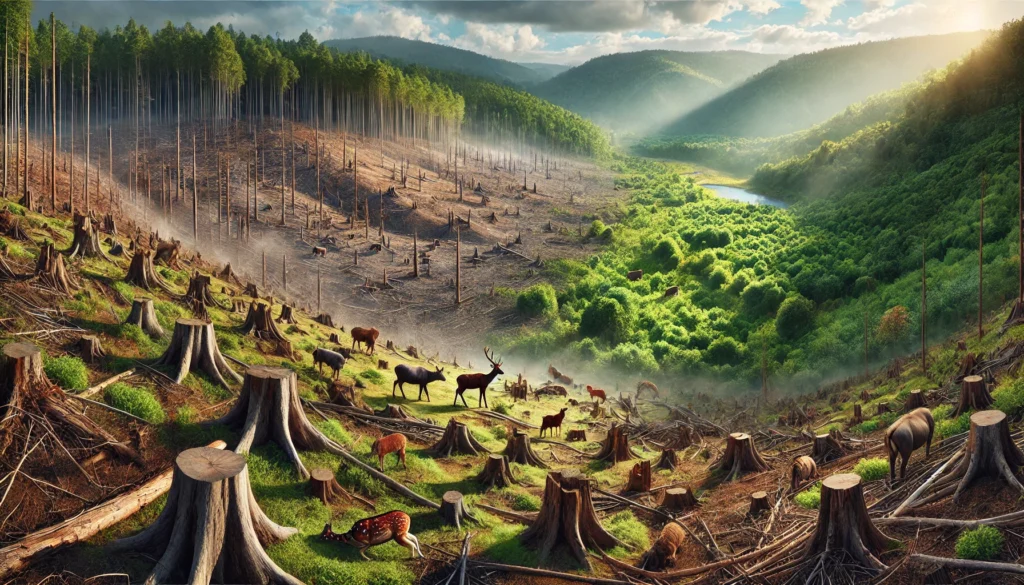Welcome, fellow curious minds and potential world-changers! Have you ever dreamed of being a scientist but thought you needed a fancy degree, a lab coat, and hair that defies gravity? Well, buckle up, buttercup, because I’m about to introduce you to the wild and wonderful world of citizen science. It’s like the scientific equivalent of a block party – everyone’s invited, and you don’t even need to bring a casserole!
Citizen science is the coolest trend since sliced bread (which, by the way, was probably invented by a citizen scientist who was tired of wrestling with whole loaves). It’s the practice of involving everyday people – yes, that means you, dear reader – in scientific research and monitoring. Think of it as crowdsourcing for the greater good, minus the endless cat videos (although, let’s be honest, those have their place too).
In this blog post, we’re going to dive deep into the world of citizen science. We’ll explore its history, its impact, and how you can get involved without setting your kitchen on fire or accidentally creating a black hole in your backyard. So, grab your metaphorical lab coat (or your actual pajamas – we don’t judge), and let’s embark on this scientific adventure together!
A Brief History: From Stargazers to Smartphone Scientists
The OG Citizen Scientists
Believe it or not, citizen science isn’t some newfangled concept cooked up by bored millennials (though we do love our avocado toast and scientific contributions). In fact, it’s been around longer than your great-grandma’s secret recipe for pickled everything.
Back in the day, before science became a professional gig, most scientific discoveries were made by passionate amateurs. These early citizen scientists were often wealthy individuals with too much time on their hands and a burning desire to understand the world around them. They were the original “influencers,” if you will, but instead of posting selfies, they were mapping the stars and classifying plants.
One of the most famous early citizen scientists was Benjamin Franklin. Yes, the same guy who flew a kite in a thunderstorm (kids, don’t try this at home) and invented bifocals (so your grandpa could read the newspaper and judge you simultaneously). Franklin made significant contributions to our understanding of electricity, all while running a printing business and helping to found a little country called the United States of America. Talk about a side hustle!
The Evolution of Citizen Science
As science became more professionalized in the 19th and 20th centuries, the role of amateur scientists diminished. But fear not, for the citizen scientist refused to go gently into that good night! Instead, they found new ways to contribute, often by collecting data for large-scale projects.
One of the oldest and most beloved citizen science projects is the Christmas Bird Count, started by the Audubon Society in 1900. It’s like a census for birds, but with more binoculars and fewer awkward door-to-door interactions. Every year, thousands of volunteers brave the winter chill to count birds, providing valuable data on bird populations and migration patterns. It’s proof that even in the dead of winter, some people would rather freeze their tails off counting chickadees than stay inside watching reruns of “Friends.”
Fast forward to the 21st century, and citizen science has exploded faster than a middle school science fair volcano. Thanks to the internet and smartphones, anyone with a Wi-Fi connection and opposable thumbs can contribute to scientific research. From tracking butterflies to measuring light pollution, there’s a citizen science project for every interest and skill level. It’s like online dating, but instead of swiping right on potential soulmates, you’re swiping right on science!
The Impact of Citizen Science: More Than Just a Hobby
Big Data, Bigger Impact
Now, you might be thinking, “Sure, counting birds sounds fun, but does it really make a difference?” Well, hold onto your lab goggles, because the impact of citizen science is bigger than a T-rex’s appetite (and trust me, those guys could eat).
One of the biggest advantages of citizen science is its ability to collect massive amounts of data. We’re talking more data than you have unread emails in your inbox (yes, even that work email you’ve been avoiding for weeks). Professional scientists, as brilliant as they are, simply can’t be everywhere at once. But with citizen scientists spread across the globe, we can gather information on a scale that would make even the most caffeinated researcher’s head spin.
Take the eBird project, for example. Started in 2002 by the Cornell Lab of Ornithology, eBird allows bird enthusiasts to report bird sightings from anywhere in the world. As of 2020, the project had collected over 810 million bird observations from more than 500,000 participants. That’s more observations than there are feathers on a giant condor! This wealth of data has led to numerous scientific publications and has helped inform conservation efforts worldwide.
Saving the World, One Data Point at a Time
But citizen science isn’t just about collecting data for the sake of it (although let’s be honest, there’s something oddly satisfying about filling in those observation forms). It’s about using that data to make real-world changes and solve pressing problems.
For instance, citizen scientists have been instrumental in tracking the spread of invasive species. The Invasive Plant Atlas of New England (IPANE) project has trained volunteers to identify and report invasive plants, helping researchers and land managers track and control these botanical bullies. It’s like being a plant detective, minus the trench coat and magnifying glass (although you’re welcome to wear those if it makes you feel more official).
Citizen science has also played a crucial role in monitoring the effects of climate change. The USA National Phenology Network’s “Nature’s Notebook” program allows volunteers to track the timing of natural events like flowering, leaf-out, and bird migration. This data helps scientists understand how climate change is affecting ecosystems across the country. It’s like being a weather reporter, but instead of predicting tomorrow’s forecast, you’re helping to predict the future of our planet.
Here’s a table summarizing some of the major impacts of citizen science:
| Impact Area | Example Project | Contribution |
|---|---|---|
| Biodiversity | eBird | Over 810 million bird observations as of 2020 |
| Invasive Species | IPANE | Tracking and controlling invasive plants in New England |
| Climate Change | Nature’s Notebook | Monitoring phenological changes across the USA |
| Astronomy | Galaxy Zoo | Classification of over 1 million galaxies |
| Public Health | Mosquito Alert | Tracking disease-carrying mosquitoes in Europe |
Getting Involved: Your Journey from Couch Potato to Citizen Scientist
Finding Your Scientific Soulmate
So, you’re convinced that citizen science is cooler than a polar bear’s toenails, and you’re ready to jump in. But where do you start? Don’t worry, future Einstein, I’ve got you covered.
The first step is to find a project that aligns with your interests. Are you a bird nerd? A star-gazing fanatic? A fungus aficionado? There’s a citizen science project out there for you. It’s like finding your scientific soulmate, but with less awkward first dates and more data collection.
Here are some popular platforms to find citizen science projects:
- SciStarter: This website is like the Tinder of citizen science, matching curious individuals with research projects that need their help. With thousands of projects to choose from, you’re sure to find your perfect scientific match.
- Zooniverse: If you’ve ever wanted to classify galaxies, transcribe historical documents, or identify animals in camera trap images, Zooniverse is your playground. It’s like being Indiana Jones, but instead of running from boulders, you’re running complex data analyses (okay, maybe not as exciting, but definitely safer).
- iNaturalist: This app turns your nature walks into scientific expeditions. Simply snap a photo of a plant or animal, and the app’s community will help you identify it. It’s like having a team of naturalists in your pocket, minus the uncomfortable bulge.
From Novice to Know-It-All
Now that you’ve found your project, you might be feeling a bit overwhelmed. Don’t panic! Most citizen science projects are designed for beginners and provide all the training you need. It’s like learning to ride a bike, but with less scraped knees and more data sheets.
Many projects offer online tutorials, webinars, or in-person training sessions to get you up to speed. For example, the COASST (Coastal Observation and Seabird Survey Team) project provides hands-on training for volunteers to survey beached birds along the Pacific Northwest coast. It’s like CSI: Seabird Edition, but with more sand in your shoes and fewer dramatic sunglasses removals.
Remember, the most important qualities for a citizen scientist are curiosity and enthusiasm. You don’t need to be a genius (although if you are, that’s cool too). As long as you’re willing to learn and follow protocols, you’re golden. It’s like baking a cake – as long as you follow the recipe and don’t set the kitchen on fire, you’ll end up with something pretty sweet (in this case, valuable scientific data instead of a delicious dessert, but both are rewarding in their own way).
The Tools of the Trade: Gearing Up for Scientific Adventure
Smartphone Scientist
One of the best things about modern citizen science is that you probably already have the most important tool in your pocket: your smartphone. It’s like having a Swiss Army knife of scientific instruments, minus the actual knife (please don’t try to take soil samples with your phone).
There are countless apps designed for citizen scientists, turning your phone into everything from a noise pollution meter to a star chart. Here are a few popular ones:
- iNaturalist: We mentioned this one earlier, but it’s worth repeating. This app is like having a nature encyclopedia that fits in your pocket and doesn’t weigh 50 pounds.
- Globe Observer: This NASA-sponsored app lets you contribute to Earth science research by measuring clouds, trees, and even mosquito habitats. It’s like being a NASA scientist, but without the need for a PhD or the ability to do complex math in your head.
- Loss of the Night: This app helps you measure light pollution by identifying stars. It’s perfect for night owls who want to contribute to science while avoiding sunburn.
Beyond the Smartphone
While your phone is a great start, some projects might require additional equipment. Don’t worry, you won’t need to build a particle accelerator in your basement (although if you do, please invite me over). Most of the time, we’re talking about simple, affordable tools.
For example, if you’re into water quality monitoring, you might need a basic water testing kit. These kits usually include things like pH strips, thermometers, and dissolved oxygen tests. It’s like being a water sommelier, but instead of determining if that’s a hint of oak you taste, you’re checking for pollutants.
Bird watchers might invest in a pair of binoculars or a field guide. Astronomy enthusiasts might want a telescope. But remember, many projects don’t require any special equipment at all. Your eyes, ears, and brain (and maybe a pencil if you’re old school) are often all you need to make valuable contributions to science.
The Challenges: It’s Not All Sunshine and Lab Rats
Data Quality: The Elephant in the Laboratory
Now, I know what some of you skeptics out there are thinking: “How can we trust data collected by amateurs?” It’s a fair question. After all, we’re talking about people who might not know the difference between a beaker and a beer mug (pro tip: don’t drink out of the beaker).
Data quality is indeed one of the biggest challenges in citizen science. But fear not! Scientists and project organizers are well aware of this issue and have developed various strategies to ensure the reliability of citizen-collected data.
These strategies include:
- Thorough training: Many projects provide comprehensive training to volunteers, ensuring they understand the protocols and can collect data accurately.
- Data validation: Some projects use expert review or automated systems to check and validate data submitted by volunteers.
- Multiple observations: By having multiple volunteers collect data on the same thing, projects can cross-check observations and identify outliers.
- Statistical methods: Researchers use sophisticated statistical techniques to account for variations in data quality and observer skill.
It’s like a scientific version of “trust, but verify.” We trust citizen scientists to do their best, but we also have systems in place to catch any woopsies.
Volunteer Retention: The Scientific Equivalent of “New Year, New Me”
Another challenge in citizen science is keeping volunteers engaged over the long term. It’s like trying to stick to a New Year’s resolution to go to the gym – enthusiasm often wanes after the initial excitement.
Many projects tackle this by:
- Gamification: Some projects incorporate elements of games to make participation more fun and engaging. It’s like turning data collection into Pokémon Go, but instead of catching Pikachu, you’re catching valuable scientific information.
- Regular feedback: Keeping volunteers informed about how their data is being used can help maintain motivation. It’s like getting a gold star for your efforts, but instead of a sticker, you get the satisfaction of knowing you’re contributing to real scientific discoveries.
- Community building: Many projects foster a sense of community among participants through forums, meetups, or social media groups. It’s like joining a club, but instead of discussing books or knitting patterns, you’re sharing your latest bird sightings or water quality readings.
- Flexible participation: Allowing volunteers to contribute as much or as little as they want can help prevent burnout. It’s the scientific equivalent of “no pressure, no diamonds,” except in this case, we actually do want the diamonds (of data, that is).
The Future of Citizen Science: To Infinity and Beyond!
Artificial Intelligence: The Rise of the Machines (But in a Good Way)
As we look to the future, artificial intelligence (AI) is set to play an increasingly important role in citizen science. But don’t worry, we’re not talking about Skynet here. These AIs are more likely to help you identify a rare butterfly than to send Terminators after you.
AI can enhance citizen science in several ways:
- Data validation: AI algorithms can help check and validate data submitted by volunteers, improving overall data quality.
- Species identification: Machine learning models can assist volunteers in identifying plants and animals, making participation easier for beginners.
- Pattern recognition: AI can help detect patterns in large datasets that might be missed by human observers.
It’s like having a super-smart robot assistant, minus the existential dread of wondering if it’s plotting to take over the world.
Virtual and Augmented Reality: Science Gets a Glow-Up
Another exciting frontier for citizen science is the use of virtual and augmented reality technologies. Imagine being able to virtually explore a coral reef while helping to monitor its health, or using augmented reality to identify and report invasive plant species in your neighborhood. It’s like Pokémon Go for science nerds (and I mean that in the most loving way possible).
These technologies could make citizen science more immersive, engaging, and accessible than ever before. Plus, it’s a great excuse to buy that VR headset you’ve been eyeing (for science, of course).
Citizen Science in Space: The Final Frontier
As space exploration continues to advance, citizen scientists are finding new ways to contribute to our understanding of the cosmos. From analyzing images of distant galaxies to helping search for exoplanets, space-based citizen science projects are allowing everyday people to explore the universe from the comfort of their own homes.
Who knows? Maybe one day, citizen scientists will be helping to analyze data from Mars rovers or contributing to the search for extraterrestrial life. It’s like being part of Star Trek, but with less risk of being vaporized by a Klingon death ray.
Your Scientific Adventure Awaits
And there you have it, folks – a whirlwind tour of the wonderful world of citizen science. From its humble beginnings with wealthy amateur naturalists to today’s smartphone-wielding data collectors, citizen science has come a long way. It’s democratizing research, advancing scientific knowledge, and giving everyday people the chance to contribute to world-changing discoveries.
So, whether you’re a bird enthusiast, a stargazer, a water quality warrior, or just someone who’s curious about the world around them, there’s a citizen science project out there waiting for you. Who knows? Your observations could help discover a new species, track the effects of climate change, or even contribute to finding life on other planets.
Remember, you don’t need a PhD, a lab coat, or even particularly good hygiene (although that last one is appreciated by your fellow citizen scientists) to contribute to science. All you need is curiosity, enthusiasm, and maybe a smartphone.
So what are you waiting for? Get out there and start sciencing! The world’s mysteries won’t solve themselves, and who knows – you might just have fun while you’re at it. After all, in the words of the great Neil deGrasse Tyson, “The good thing about science is that it’s true whether or not you believe in it.” And with citizen science, you get to be part of that truth-seeking adventure.
Now go forth and collect that data, you beautiful nerds!
Disclaimer: This blog post is based on information available up to 2020. While we strive for accuracy, science moves fast (almost as fast as that lab rat that escaped last week). If you spot any inaccuracies, please let us know so we can update our information faster than you can say “hypothesis.” Remember, in science, being wrong is just the first step to being right!




